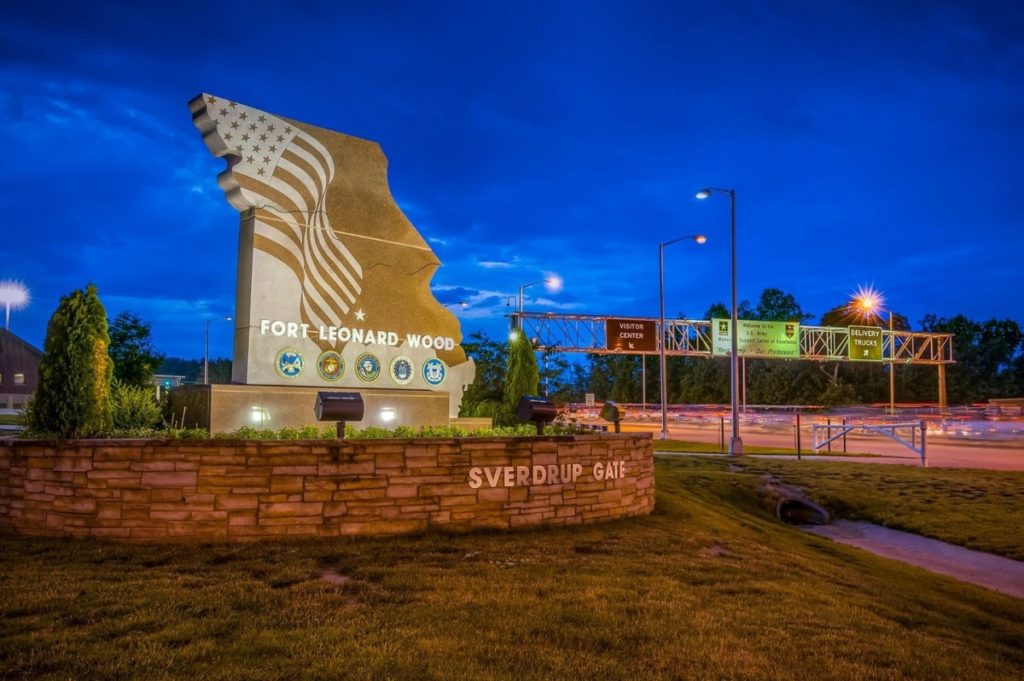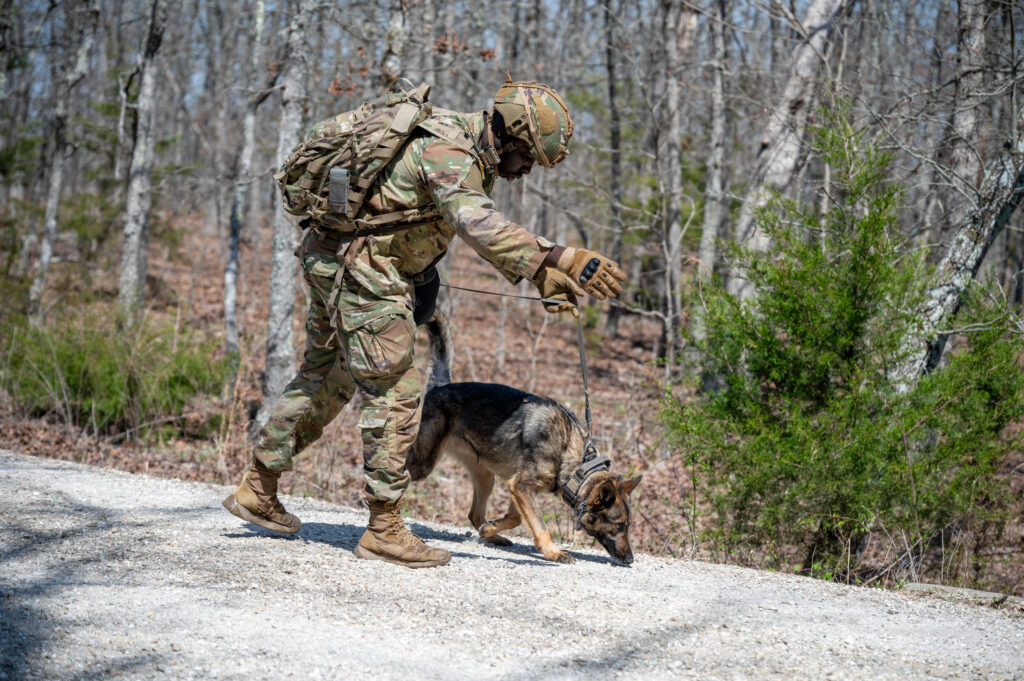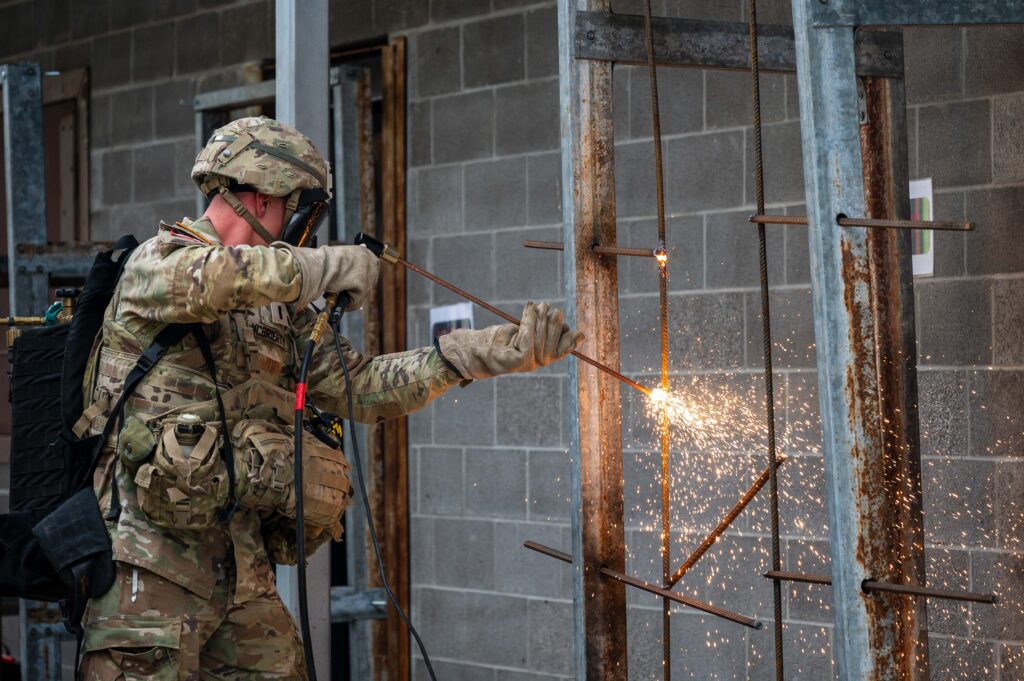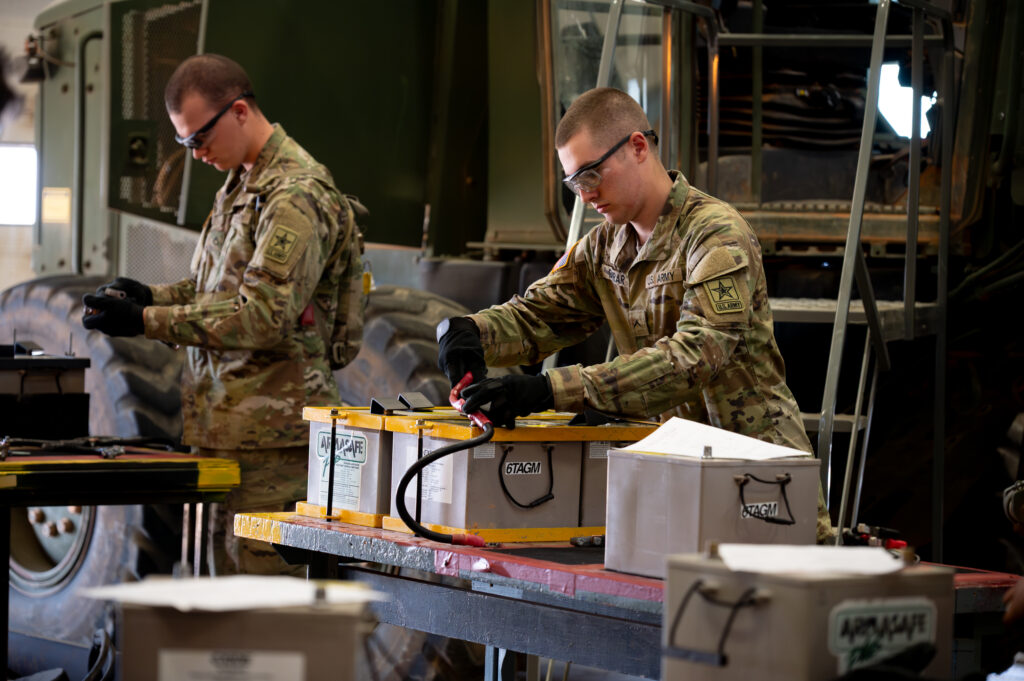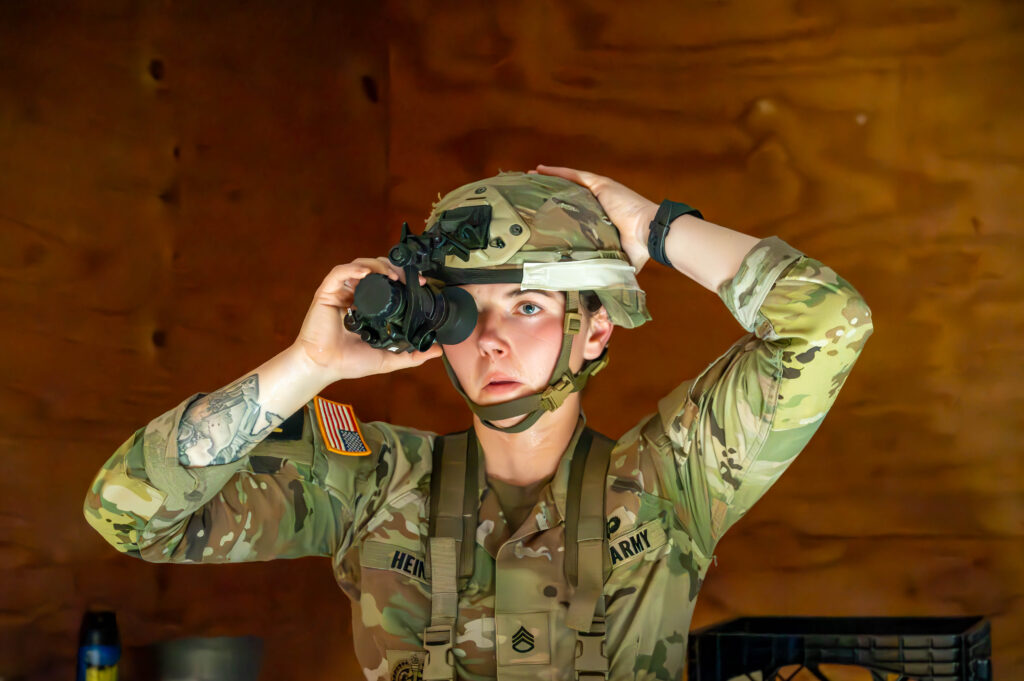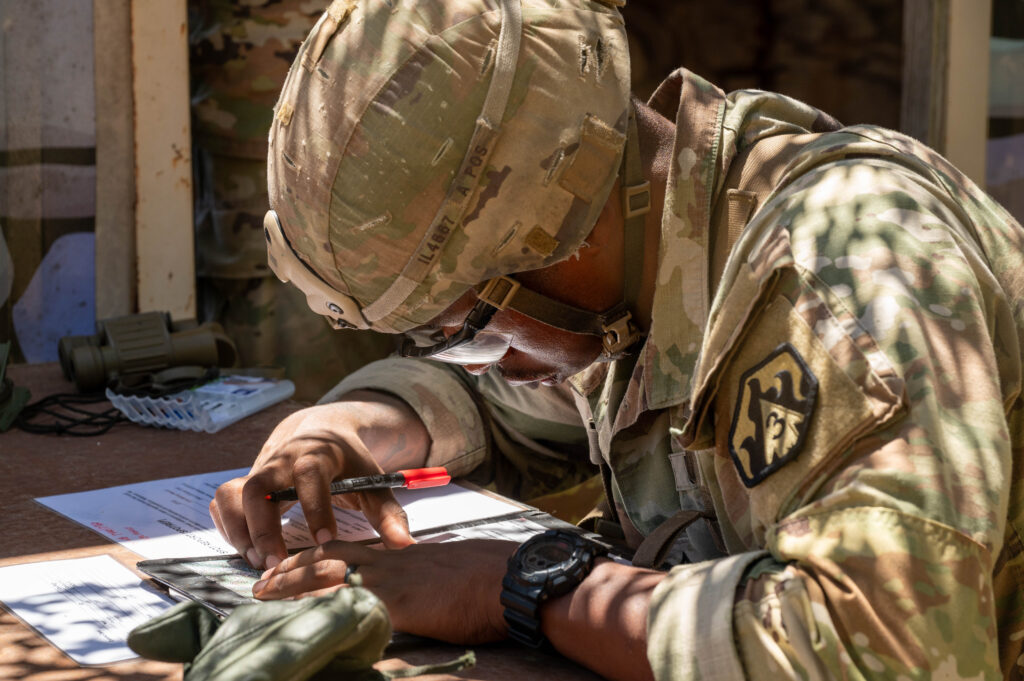By Amanda Sullivan
FORT LEONARD WOOD, Mo. (Oct. 1, 2021) — A quiet Friday morning graduation at Sapper Grove on Fort Leonard Wood marked the end of an era for the Engineer Corps, as the Counter Explosives Hazard Center’s Route Reconnaissance Clearance Course, also known as R2C2, has come to an end.
The final 15 Soldiers to complete R2C2 joined the more than 14,000 others who have completed it since it was stood up in 2005, to counter the effectiveness of improvised explosive devices, or IEDs.
The final iterations of the training were conducted from Sept. 13 through 24.
“Currently, the Army is shifting priorities and focus to fighting and winning large-scale ground combat operations against peer and near-peer threats across the globe,” said Lt. Col. Aaron Williams, CEHC director. “This is a far departure from the counter-terrorism, counter-insurgency and stability operations in Iraq and Afghanistan that has captured attention for more than 20 years.”
The CEHC has spent those two decades continuously working to develop and provide an expansive variety of training and equipment designed to protect Soldiers through the identification, detection and defeat of IEDs.
According to Williams, during operations from 2003 to 2011 in Iraq, insurgents used IEDs extensively against U.S.-led forces, and by the end of 2007, IEDs were responsible for approximately 63 percent of coalition deaths there.
“They were also used extensively in Afghanistan by insurgent groups, and were responsible for over 66 percent of coalition casualties in the Afghanistan campaign, from 2001 to 2021,” he said.
U.S. Army Engineer School Command Sgt. Maj. John Brennan spoke at the final graduation, and encouraged the class to take the knowledge gained from the course and impart it to others.
“I need you to be stewards of this,” he said. “Take this (knowledge), go back and share it. We are relying on those who are qualified inside of organizations to bring that experience forward. So, that’s what you guys are charged with: carrying that back to your organizations and teaching others.”
When she heard this was the final R2C2 course, 2nd Lt. Elena Lopez-Berryman pushed to attend because she felt it could give her more of a background in her field as an engineer officer.
“I’ve been trying to do anything that gives me a little more knowledge of the Engineer Corps,” she said. “I didn’t want to miss an opportunity, and it was definitely a learning experience.”
As a One Station Unit Training platoon leader with Company D, 31st Engineer Battalion, Lopez-Berryman said the knowledge and experience she will take back to her unit will benefit trainees and cadre alike.
“The lessons I learned here are invaluable to anyone in training, but also to the drill sergeants as a reminder,” she said. “A lot of them have deployed, so they understand what I just learned, but it’s always great to have those reminders from someone who just went through the school.”
For trainees, Lopez-Berryman said the key is explaining not only what she learned, but why it is important.
“Connecting task and purpose is one of the most essential things a leader can do,” she said.
Lopez-Berryman also said she believes the course played a critical role in protecting Soldiers and ensuring mission success for the Army during the Global War on Terror.
“We needed the ability to detect the IEDs to keep our people safe,” she said. “The more survivable we make our vehicles, personnel and technology that we use, the better we can do that.”
For Larry Jackson, CEHC unit support division chief who started with CEHC and the R2C2 course in 2005, watching the last graduates complete the course was bittersweet.
“The last course feels like when your children leave home for the first time – you are sad, and question if you provided them with all the needed tools to be successful,” he said. “On the flip side, I’m happy. I’m very satisfied with the product that CEHC has provided to the warfighters over the past 16 years.
Jackson said the course’s legacy will live on and continue to have a profound effect on saving Soldiers’ lives.
“This course has saved countless lives, and will continue to do so,” he said. “Our team of military instructors and Army civilians have provided an enduring enabler that will be in existence for many years to come.”
While the R2C2 course will no longer be offered, Williams said the CEHC is committed to continuously informing the force regarding explosive threats and their countermeasures.
“Enduring, emerging and evolving threats continue to pose significant risks to the warfighter on the battlefield,” he said. “As long as this fact persists, the CEHC will employ all resources to train and equip the force to fight and win.”
Jackson agreed.
“Some may say it’s an end of an era, I say the era is just beginning,” he said.

-30-
About Fort Leonard Wood
Fort Leonard Wood is a thriving and prosperous installation that has evolved from a small basic training post 80 years ago to a premier Army Center of Excellence that trains more than 80,000 military and civilians each year.
Fort Leonard Wood is home to the U.S Army Maneuver Support Center of Excellence and three U.S. Army schools: the U.S. Army Engineer School; U.S. Army Chemical, Biological, Radiological and Nuclear School; and the U.S. Army Military Police School. In addition to training engineer, CBRN and military police specialties for the Army, Fort Leonard Wood also provides gender-integrated in-processing and Basic Combat Training for new Soldiers.
Fort Leonard Wood also hosts and trains with the largest Marine Corps Detachment and Air Force Squadron on any Army installation as well as a large Navy construction detachment.
More information about Fort Leonard Wood is at: https://home.army.mil/wood/index.php/about/mission
